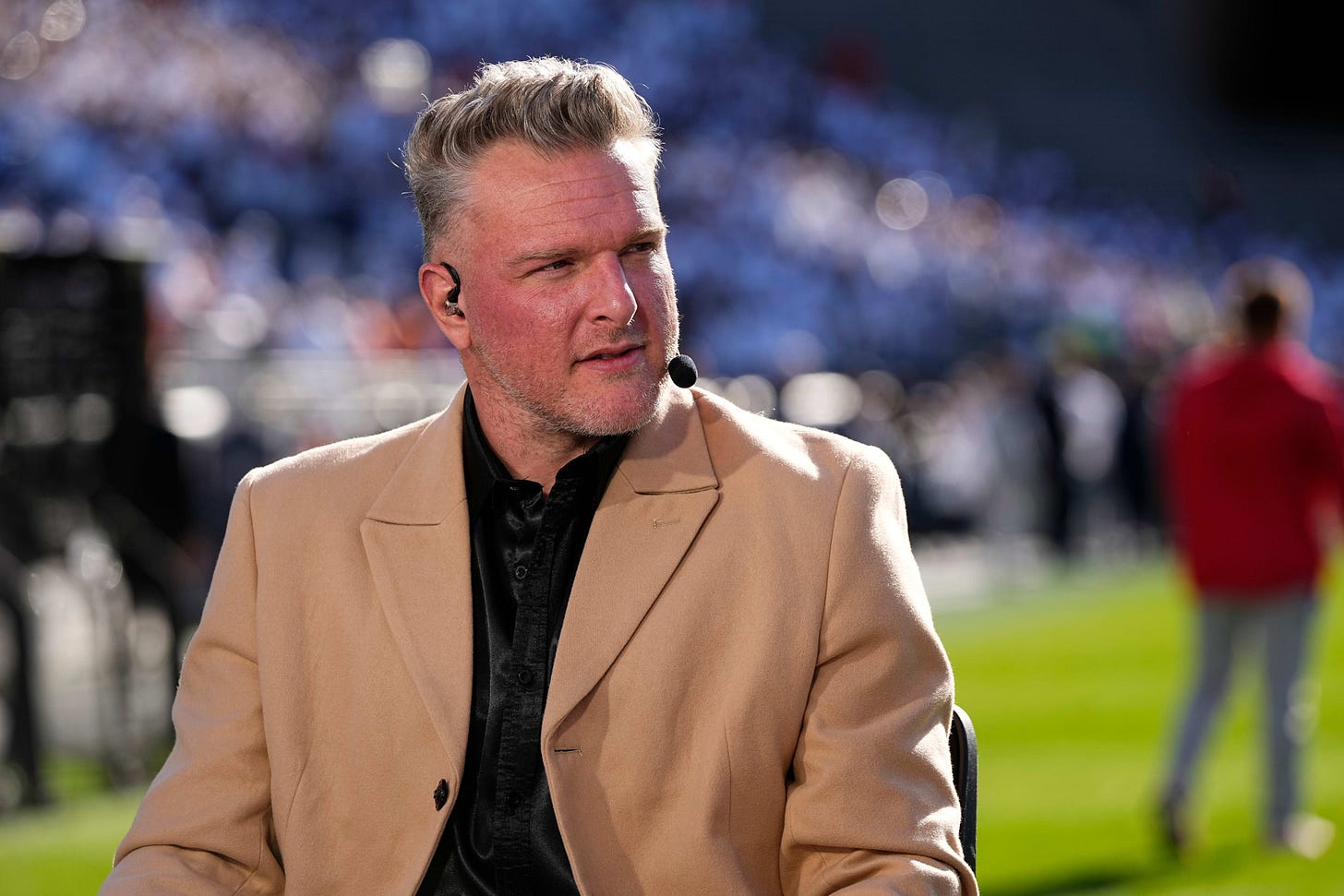Pat McAfee Isn’t Running ESPN. The Algorithm Is.
ESPN didn’t surrender to Pat McAfee. It surrendered to the feed.
Sage Steele watched Donald Trump on Pat McAfee last week and made headlines saying it proved one thing.
Pat can do whatever he wants at ESPN and the execs can’t stop him. He now owns ESPN.
It’s a simple idea that many agree with. It’s wrong.
Sage is describing the world she knows, that she came up in. That version of ESPN was shaped by office politics, executive fiefdoms and a clear sense of who had the juice and who didn’t.
ESPN isn’t trapped. Something else is calling the shots.
It’s bigger than McAfee or Stephen A. Smith (who coincidentally don’t like each other) or Peyton Manning or any Bristol exec.
It’s the attention economy. And it’s not just running ESPN, it’s in power all over.
ESPN is responding to the same force that every legacy media company (and other institutions) is reacting to. They are creatively attempting to avoid a quiet and gradual decline.
If they stuck with the old formula that dominated (SportsCenter etc.) the network would be irrelevant today.
A 5 minute clip from the anchor desk will get maybe 0.8 seconds of watch time on YouTube.
Pat McAfee goes back and forth with Boston Connor about a potential Patriots Super Bowl run for 4 minutes and it’s got 444K YouTube views in an hour.
On a given day, McAfee’s show outperforms multiple ESPN studio shows combined across social.
This isn’t just personal dominance. This is velocity, the kind that is built for the algorithm.
McAfee’s clips feel loud, chaotic, emotional and unpredictable. Everyone interrupts each other and laughs hard. A low velocity clip from the traditional shows feels polished, controlled, commoditized and forgettable.
One spreads, one sinks.
This isn’t a moral statement. It’s simply how it is now.
ESPN didn’t decide that louder was better. There were years of pushback and resistance.
The algorithm decided it for them. It decided louder spreads farther and after some time, ESPN adapted to survive.
Pat McAfee benefits from this shift but he didn’t cause it. He’s not the power, he’s the product.
McAfee understands that his freedom and power comes from ESPN depending on him. His show has rope because it travels fast and wide, it goes 200 MPH on the fastest of the internet highways.
Stephen A. Smith shows the same dynamic at play. He holds legitimate influence because he dominates the incentive culture. A “Stephen A” rant generates watch time, engagement and viral reach. ESPN trusts him because the audience does.
This is why Sage’s take misses the point.
She thinks this is about a media superstar overpowering the executives and the four letter word that they protect with their lives.
The truth is that the hierarchy itself collapsed over time.
The internal brawls she remembers don’t matter now. The power structure Sage refers to doesn’t exist anymore.
This isn’t just in sports or news media or politics… it’s anywhere that’s competing for attention.
This moment is wider than ESPN and we’re in the first inning.
Audience impulses have more authority today than any institution. Look at our politics.
The emotional velocity of a particular moment decides what gets seen in our feeds.
The platforms and their algorithms don’t reward stability. They reward the spike, the novelty and most of all: the reaction.
The people who look the biggest and most powerful in our age aren’t beating the system. They’re shaped by it.
From McAfee to Stephen A, from Trump to Zohran, from Mr. Beast to Emma Chamberlain… they are simply the ones that fit the incentives right now.
Once you can see the pattern, the real headline is clear.
Pat McAfee isn’t running ESPN. The algorithm is.
And the algorithm has only one rule.
Be interesting or become invisible.





Great read. Thank you.